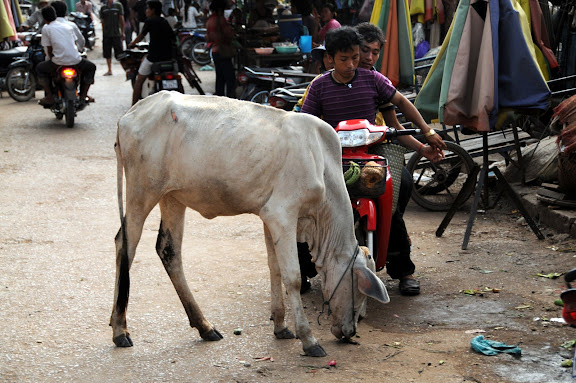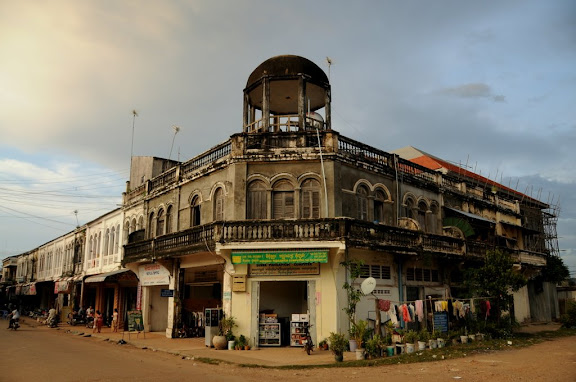

If you don’t have time to read the full posting below, here you have the relevant links:
ENCOURAGE YOUR GOVERNMENT TO SIGN AND RATIFY THE CLUSTER BOMB TREATY BAN ON DECEMBER 3, 2008, IN OSLO. TO DO THAT, GET YOUR FRIENDS AND NEIGHBOURS TO SIGN THE PEOPLE’S TREATY AT:
http://www.minesactioncanada.org/peoples_treaty/index.cfm?lang=en
More info:
http://www.minesactioncanada.org/peoples_treaty/index.cfm?fuse=Fact_Sheets.Index&lang=en
Si no tienes tiempo para leer el artículo entero que viene abajo, aquí tienes los enlaces que necesitas:
HAZ QUE TU GOBIERNO FIRME Y RATIFIQUE EL TRATADO CONTRA LAS BOMBAS EN RACIMO EN OSLO EL 3 DE DICIEMBRE DEL 2008. PARA HACERLO, ANIMA A TUS AMIGOS Y VECINOS A QUE FIRMEN EL TRATADO DEL CIUDADANO EN:
http://www.minesactioncanada.org/peoples_treaty/index.cfm?lang=es
Más información:
http://www.minesactioncanada.org/peoples_treaty/index.cfm?fuse=Fact_Sheets.Index&lang=es
WHAT ARE CLUSTER BOMBS? / ¿QUE SON LAS MUNICIONES EN RACIMO?
A cluster bomb, o cluster munition, consists of a container filled with lots of smaller bombs (sub munitions or bomblets). These containers might be dropped from aircraft or fired from the ground.
Una munición en racimo es una bomba rellena de muchas bombas mas pequeñas (submuniciónes o bombetas explosivas). Estas municiones en racimo pueden soltarse desde el aire o dispararse desde tierra.
Breaking open in midair, the container releases the sub munitions – saturating an area the size of several football fields. Anybody within that area, be they military or civilian, is likely to be torn apart.
La bomba libera las submuniciones mientras está en el aire y estas se dispersan sobre areas muy amplias, del tamaño de varios campos de fútbol. Cualquier persona en ese area, sea militar o civil, seguramente sufrirá heridas de extrema gravedad.
Many sub munitions fail to detonate on impact and become de facto antipersonnel mines killing and maiming people long after the conflict has ended. These duds are more lethal than antipersonnel mines; incidents involving sub-munition duds are much more likely to cause death than injury.
Muchas de las submuniciones no estallan al caer y de hecho se convierten en minas antipersona, matando y lisiando incluso mucho despues de terminados los conflictos. Estas bombetas que no han explotado son mas letales que las minas antipersona; incidentes con este tipo de submuniciones son mas susceptibles de matar que de herir.
CLUSTER BOMBS FACTS AND STATS / BOMBAS EN RACIMO: DATOS Y ESTADÍSTICAS.
• Cluster bombs were first used in World War II by German and Soviet forces.
• Las fuerzas alemanas y soviéticas emplearon las bombas en racimo por primera vez en la 2a Guerra Mundial.
• In 1943 German aircraft dropped more than 1,000 SD-2 butterfly bombs on the port of Grimsby (UK).
• En 1943 los aviones alemanas soltaron más de 1000 SD-2 bombas mariposa sobre el puerto de Grimsby (Reino Unido)
• During the 1970s, the USA used massive numbers of cluster bombs in Cambodia, Laos and Vietnam.
• En los años 70, los EEUU utilizaron las bombas en racimo de forma masiva en Camboya, Laos y Vietnam.
• Some have likened the scale of the bombing in Laos to the equivalent of a B52 load of bombs every 8 minute for approximately 9 years.
• Algunos estiman que la escala de bombardeos en Laos equivale a un B52 cargado de bombas cada 8 minutos durante aproximadamente 9 años.
• Laos is the most heavily cluster bombed country in the world following the 1965-1973 Vietnam War. The ICRC (International Committee of the Red Cross) estimates that in Laos alone, 9 to 27 million unexploded sub munitions remain, and some 11,000 people have been killed or injured, more than 30 percent of them children.
• Laos es el país que más ha sido bombardeado con municiones en racimo como consequencia de la guerra de Vietnam entre 1965 – 1973. La ICRC (Comité Internacional de la Cruz Roja) estima que tan solo en Laos aún quedan entre 9 y 27 millones de submuniciones sin explotar, y que unas 11000 personas han muerto o han sido heridas, de las cuales más del 30% son niños.
• An estimate based on US military databases states that 9,500 sorties in Cambodia delivered up to 87,000 air-dropped cluster munitions.
• Según bases de datos militares de los EEUU, se estima que unas 9500 salidas aereas soltaron sobre Camboya hasta 87000 bombas en racimo.
• More recently, cluster bombs were used extensively in the Gulf War, Chechnya, the former Yugoslavia, Afghanistan, Iraq and in Lebanon in 2006.
• Más reciéntemente, las bombas en racimo han sido utilizadas de forma extensiva en la Guerra del Golfo, Chechenia, la ex-Yugoslabia, Afghanistán, Irak y Líbano en 2006.
• They were also used by Russian and Georgia in the recent conflict over South Ossetia in August 2008, killing and injuring dozens of civilians during the strikes and after. The death toll is likely to rise.
• También Rusia y Georgia las han usado en el reciente conflicto sobre Osetia del Sur en Agosto del 2008, matando e hiriendo a docenas de civilies durante los ataques y después. Se teme que la lista de muertos siga aumentando.
• 60% of cluster bomb casualties are injured while undertaking their normal activities.
• El 60% de las víctimas de las bombas en racimo reciben sus heridas mientras realizan sus actividades diarias.
• On average, a quarter of civilian casualties are children (See Handicap International’s “Circle of Impact” report from 2007: http://en.handicapinternational.be/download/0606_WEB_FINAL_REPORT_HI_BD.pdf ). The small size and curios shapes of the bomblets dispersed by cluster bombs make them particularly interesting to young people.
• De media, un 25% de las víctimas civiles son niños (ver el informe de Handicap International de 2007, en inglés: http://en.handicapinternational.be/download/0606_WEB_FINAL_REPORT_HI_BD.pdf ). El pequeño tamaño y curiosa forma de las bombetas dispersadas por las municiones en racimo atraen especialmente a los más jóvenes.
• More than two dozen countries have been affected by the use of cluster munitions including…
• Más de dos docenas de paises se han visto afectados por el uso de bombas en racimo, incluyendo…
Afghanistan, Albania, Angola, Azerbaijan, Bosnia and Herzegovina, Cambodia, Chad, Croatia, DR Congo, Eritrea, Ethiopia, Georgia, Grenada, Iraq, Israel, Kosovo, Kuwait, Laos, Lebanon, Montenegro, Saudi Arabia, Serbia, Sierra Leone, Sudan, Syria, Tajikistan, Uganda, and Vietnam, as well as Chechnya, Falkland/Malvinas, Nagorno-Karabakh, and Western Sahara.
• At least 15 countries have used cluster munitions:
• Al menos 15 paises han empleado bombas en racimo:
Eritrea, Ethiopia, France, Georgia, Israel, Morocco, the Netherlands-Países Bajos, Nigeria, Russia (USSR), Saudi Arabia, Sudan, Tajikistan, UK, US, and FR Yugoslavia.
• A total of 34 states are known to have produced over 210 different types cluster munitions, amongst them:….
• Se sabe que un total de 34 estados han producido más de 210 tipos distintos de bombas en racimo, entre ellos:…
Brazil, China, Egypt, France, Germany, Greece, India, Iran, Iraq, Israel, Italy, Japan, North Korea, South Korea, Pakistan, Poland, Romania, Russia, Serbia, Singapore, Slovakia, South Africa, Spain, Sweden, Turkey, UK, US
• At least 13 countries have transferred over 50 types of cluster munitions to at least 60 other countries.
• Al menos 13 países han transferido más de 50 tipos de bombas en racimo a al menos otros 60 países.
• Billions of cluster bomblets are currently stockpiled by some 78 countries worldwide and around half of these countries have now agreed to destroy them.
• Unos 78 países en todo el mundo aún almacenan miles de millones de bombetas explosivas, y aproximadente la mitad de estos países han acordado la destrucción de las mismas.
WHAT HAPPENS NOW? / ¿Y AHORA QUÉ?
The government of Norway initiated the Oslo Process in 2007. Since then there have been meetings in Phnom Penh, Lima, Costa Rica, Belgrade, Paris, Brussels, Vienna, Wellington and Dublin where a strong treaty was negotiated by 107 countries to ban the use, production, transfer and stockpiling of cluster munitions .
NOW AGAIN:
ENCOURAGE YOUR GOVERNMENT TO SIGN AND RATIFY THIS CLUSTER BOMB TREATY BAN ON DECEMBER 3, 2008, IN OSLO. TO DO THAT, GET YOUR FRIENDS AND NEIGHBOURS TO SIGN THE PEOPLE’S TREATY AT:
http://www.minesactioncanada.org/peoples_treaty/index.cfm?lang=en
El gobierno de Noruega inició el Proceso de Oslo en 2007. Desde entonces ha habido reuniones en Phnom Pen, Lima, Costa Rica, Belgrado, Paris, Bruselas, Viena, Wellington y Dublín, donde 107 países acordaron de manera firme un tratado para prohibir el uso, producción, transferencia y almacenaje de municiones en racimo.
AHORA, DE NUEVO:
HAZ QUE TU GOBIERNO FIRME Y RATIFIQUE ESTE TRATADO CONTRA LAS BOMBAS EN RACIMO EN OSLO EL 3 DE DICIEMBRE DEL 2008. PARA HACERLO, ANIMA A TUS AMIGOS Y VECINOS A QUE FIRMEN EL TRATADO DEL CIUDADANO EN:
Read more on this post/ Continuar leyendo esta entrada...




















